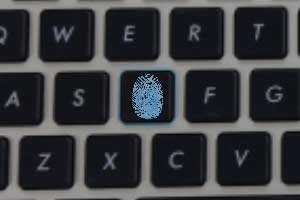Table of Contents
- ‣ Data Wiping Utility
- ‣ Keylogger
- ‣ Detecting Keylogger
- ‣ Keylogger Types
Posted By: Technogeek | Updated On: Feburary 24, 2023
Keyloggers can be classified into two types: software-based and hardware-based. Software-based keyloggers are installed on the target computer as a software program, while hardware-based keyloggers are physical devices that are attached to the computer keyboard or USB port.
Software-based Keyloggers:
Software-based keyloggers can be installed on a computer in a variety of ways, such as by phishing attacks, malicious email attachments, or software downloads from the internet. Once installed, the keylogger runs silently in the background, recording all the keystrokes made on the keyboard. Some advanced software keyloggers can also capture screenshots, log URLs visited, record emails sent and received, and track instant messaging conversations.
There are different types of software-based keyloggers, such as:
- ⮞ Kernel-based keyloggers: These keyloggers operate at the kernel level of the operating system, allowing them to capture all keystrokes and system events.
- ⮞ Hook-based keyloggers: These keyloggers use hooks to intercept keystrokes before they reach the application, allowing them to capture passwords and other sensitive information.
- ⮞ API-based keyloggers: These keyloggers use Windows API functions to capture keystrokes and other system events.

Hardware-based Keyloggers:
Hardware-based keyloggers are physical devices that can be attached to a computer keyboard or USB port. These keyloggers work by intercepting the electrical signals that are sent between the keyboard and the computer, allowing them to capture keystrokes and other data.
Hardware-based keyloggers can be small and discreet, making them difficult to detect. Some advanced hardware keyloggers can also be remotely controlled via Wi-Fi or Bluetooth, allowing an attacker to capture data from a remote location.
Uses of Keyloggers:
Keyloggers can be used for various purposes, such as:
- Monitoring employee activities: Some companies use keyloggers to monitor the activities of their employees, such as tracking the time spent on each task, monitoring email communications, and capturing login credentials.
- Parental control: Parents can use keyloggers to monitor the online activities of their children, such as tracking their social media activity, monitoring their chat conversations, and blocking access to inappropriate content.
- Cybercrime: Keyloggers can be used by cybercriminals to steal sensitive information, such as login credentials, credit card numbers, and personal information.
- Law enforcement: Law enforcement agencies can use keyloggers to monitor the activities of suspects, such as tracking their online communication and capturing their login credentials.
Prevention of Keyloggers:
There are several ways to prevent keyloggers from capturing your sensitive information, such as:

- 💿 Use anti-malware software: Use anti-malware software to protect your computer from keyloggers and other malware. Make sure to keep your software up-to-date to ensure that it can detect the latest threats.
- 📧 Be cautious of suspicious emails and links: Avoid clicking on suspicious emails or links, as they may contain keyloggers and other malware.
- 🔐 Use two-factor authentication: Use two-factor authentication to protect your online accounts, as it requires a second form of authentication in addition to your password.
- ⌨ Use virtual keyboards: Some software applications and operating systems offer virtual keyboards, which can be used to input sensitive information without using the physical keyboard.